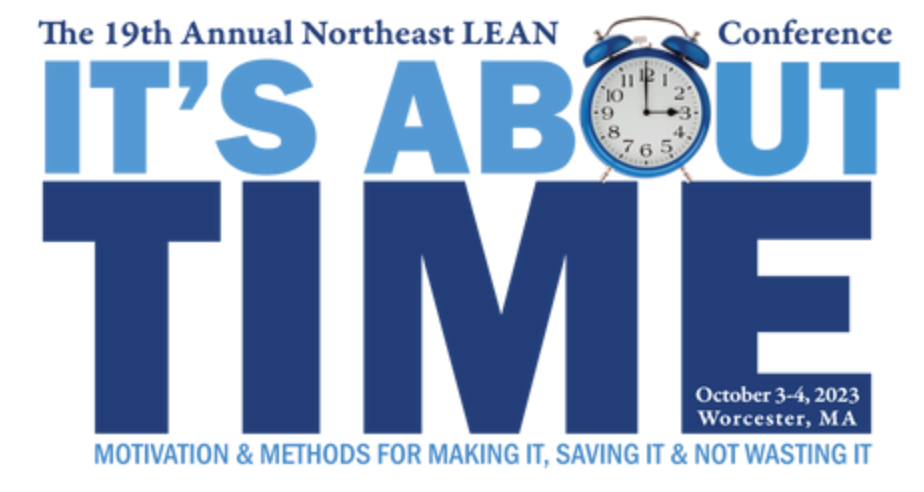A Blog About Understanding The Toyota Production System and Gaining Its Full Benefits, brought to you by "The Toast Guy"


Labor Wastage Day
I’ll admit it. After five decades watching U.S. companies turning to simplistic accounting tricks to remain profitable, I’m discouraged. I was a kid when I first discovered TPS. My eyes were opened to the immense amount of waste in our production and business processes. I was so excited at the potential it unleashed in my company, that I anticipated a renaissance in U.S. manufacturing. U.S. manufacturing was struggling in the 1980’s to remain competitive in an increasingly global marketplace, so the prospect of radically reducing costs and improving service by engaging the workforce to reduce process waste seemed like a no-brainer.
Naïve me. Based on the damnable formula, C = L + M + O, cost decisions were being made in boardrooms across the U.S. to:
- a) reduce labor and material costs by sourcing offshore and
- b) purchase large quantities of material (say, a ship-load) of material to reduce the piece price.
This short-term thinking to improve quarterly earnings was just the tip of the iceberg of faulty rationalizations to “focus on core competencies,” typically marketing and product development. Keep the big brains in the U.S. and outsource the mundane stuff. But, with production separated from the big brains, manufacturers were essentially self-decapitating: losing their production know-how.
In 1992, NAFTA was heralded as a means to consolidate North American manufacturing strength – U.S., Canada, and Mexico – in the world economy. A major consequence however was the U.S. and Canada relocating production to Mexico. A supplier at that time to my company relocated production of higher volume products to Mexico, keeping only low volume products in the U.S. to absorb all of the expensive overhead that was maintained there. This, predictably, made the low volume products appear event less profitable. A customer to my company relocated to Juarez, building a site for production on the Mexican side of the border connected to a site on the Texas side by a private border crossing. In the C = L + M + O world, this all looked very smart. At least on paper.
By the 2000’s, notwithstanding efforts by organizations like AME, LEI, the Shingo Institute and Toyota itself to promote TPS, most manufacturers had settled into thinking that the only way to reduce costs was to produce and source in the lowest wage locales. Even as Toyota cars made inroads in the U.S., a marketing campaign by the Big 3 automakers (Ford, GM, Chrysler) urged us to patriotically “buy American.” The fallacy with this was that while Toyota was making a commitment to produce in the U.S., a significant percentage of Big 3 products were made outside of the U.S. Ironically, Toyota was making superior cars in the U.S. with U.S. workers at costs well below Ford, Chrysler and GM.
By the mid-2000’s, scholars were touting out-sourcing as the Third Manufacturing Revolution. Around that time, I left my job in manufacturing to become a consultant at GBMP, a non-profit organization with a mission to re-program at least a small portion of wayward organizations to focus on internal process improvement. It was (and is) an uphill battle, but a rewarding one As a counterpoint to outsourcing, GBMP selected the theme “Made Lean in America” for our 9th Annual Northeast Lean Conference. The conference was a big success for those who attended, but in social media (which by 2011 was a thing) several luminaries characterized the idea of manufacturing in the U.S. as “noble and quaint, but wholly unrealistic.” The future, they said, belonged to China; fait accompli.
I disagree. think the jury is still out on the future of production in the U.S. But I’m reminded of the quote attributed to Henry Ford:
“Whether you think you can, or you think you can't--you're right.”
Yesterday I was in a Zoom meeting (now, also a thing) where we discussed the most recent initiative to bring manufacturing back to North America (occasioned, I think, mostly as a serendipitous consequence of COVID19.) One respected expert offered,
“Of course, the bulk of this reshoring will be to Mexico, because we can’t find the people here in the U.S. to make the products”
Huh? Is this where are today? Same place as when I was a kid in manufacturing. Turning a blind eye to process waste, about how 95% of the elapsed time in any process provides no value to the customer – and, by the way, also wastes the valuable time of the producers. But we can’t find the people? Wouldn’t it be better to think about how to stop wasting so much of the peoples’ time? This Labor Day, I think we don’t have labor shortage problem; we have a persistent labor wastage problem! Isn’t it about time to do something about that?
O.L.D.
BTW – Happy Labor Day. I may be discouraged, but thanks to Lean achievements of many organizations in our community, I’m still a believer. 😆 Which is why our 19th Annual Northeast Lean Conference is entitled, “IT’S ABOUT TIME.” Please join us, and get energized – either in-person or remote, through Whova! Click here for lots more information about the conference.
